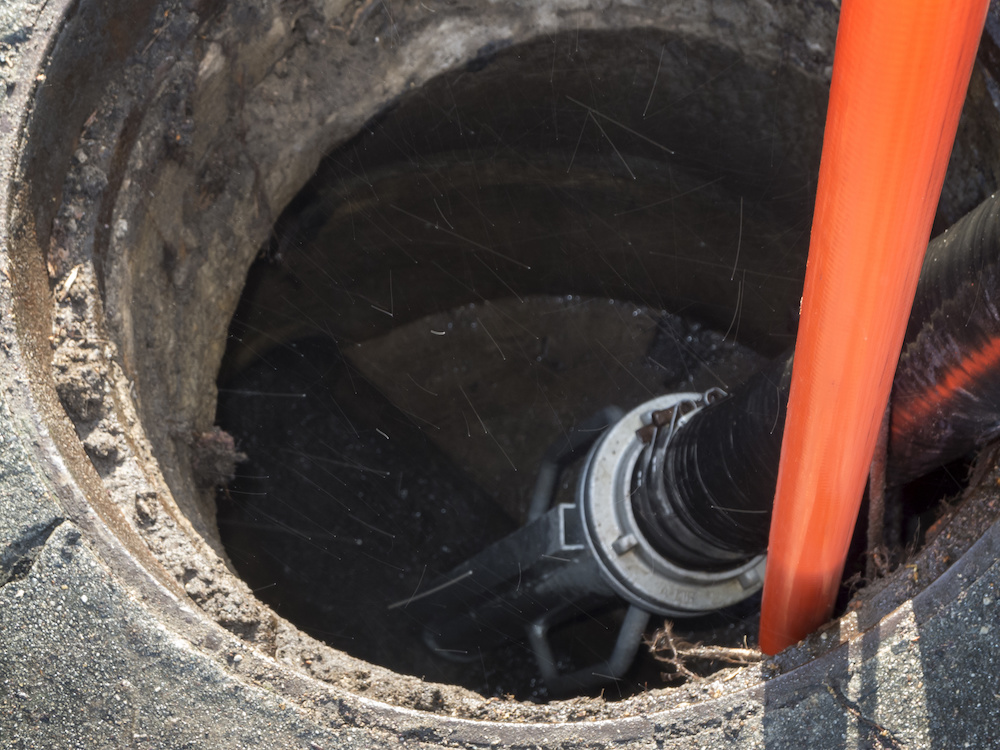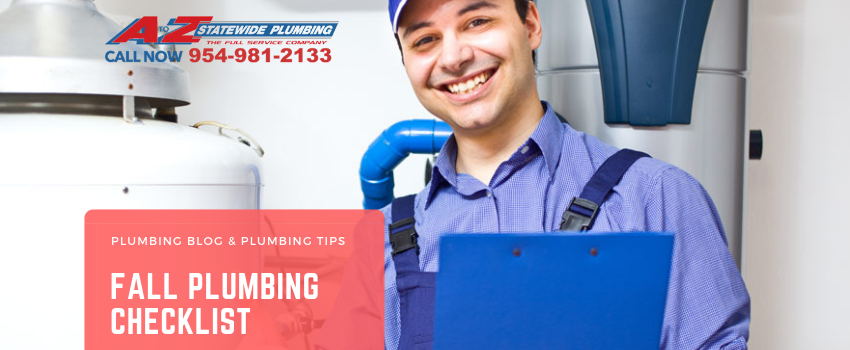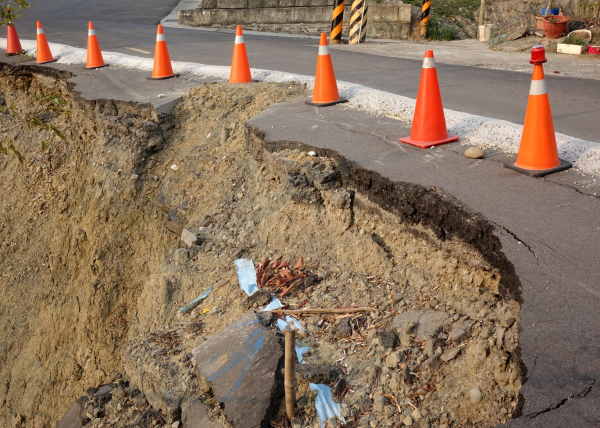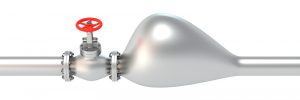What to Do When Your Hot Water Heater Leaks
Water heaters, whether gas or electric, will last you about 8 to 12 years if you take good care of them.
Even so, there’s always a chance your water heater could leak. If it does, the good news is that most small water heater leaks can be patched up pretty easily.
And the best part?
There are several things you can do before you call a plumber to make it even easier!

Why Is My Water Heater Leaking?
The leading causes of water heater leaks include:
- Broken drain valves: These will cause water leaks from the bottom of the tank. They’re easily fixed by replacing the broken drain valve.
- Corrosion: Sediment buildup can cause corrosion, cracking, and holes in the bottom of the tank. When this happens, it’s usually time for water heater replacement.
- Loose water line connections: Normal wear and tear can loosen the inlet or outlet water lines, causing leaks. This problem can usually be fixed by tightening or replacing the loose, worn water lines.
- Broken temperature/pressure valves: As their name suggests, these valves monitor and regulate the temperature and pressure inside water heaters. When they break, they can cause water leaks from the sides of a water heater tank.
Of course, various other things can cause water heater leaks—and, sometimes, these leaks are the result of multiple issues. The best way to determine what’s causing your water heater leak and get the best solution for fixing it is by contacting a professional, like the trusted plumbers at Len The Plumber.
What to Do When You Discover a Water Heater Leak: 3 Steps to Take
If your water heater is leaking, take these three steps:
- Cut the power: This is the very first thing you should do when you find a hot water leak. To turn off the energy source leading to:
- Gas water heater: Find your thermostat. You should see a little knob with three settings: ON, OFF, and PILOT. Switch it to OFF or PILOT to shut off the gas and make the heater safe to work on.
- Electric water heater: Go to your breaker panel and find the breaker labeled “water heater.” Turn it off to cut the power to your unit.
- Shut off the water: Turn off the water by finding the cold water line leading to your water heater. There should be a valve on the line; turn it to the right until it closes. This will cut off the water and allow you to move on to the next step.
- Drain the water tank: If you have a tank (standard) water heater, draining your water heater is the most essential step. It also happens to be the most involved! To drain your water heater tank:
- Find the drain valve near the bottom of your water heater and attach a garden hose to it.
- Run the hose to a floor drain or sump pit.
- With the hose in place, open the valve (on older hot water heaters, this may look like an ordinary spigot; on newer systems, there’s a drain stem with a slot for a screwdriver).
- NOTE: Once you open the drain valve, you may notice the water either doesn’t flow or doesn’t flow very well. This is because there’s a vacuum in the water heater.
- To break the vacuum, open any hot water faucet in your home. This will let air into the water tank and allow it to drain more easily. Once you establish a good flow, the whole tank should drain in about an hour.
Once the water heater is drained, contact Len The Plumber for water heating repair service! We’ll find the location of the water heater leak and take care of it quickly.
Plus, we offer 24-hour emergency water heater service at zero extra cost, and we have flexible financing options. That makes it easier and more convenient than ever to get the service and water heater repairs you need whenever you need them!
Schedule Water Heater Repair Service: Contact Len The Plumber
The expert plumbers at Len The Plumber can diagnose and repair any type of water heater leak or problem. Whether you have a gas or electric system, or a tank or tankless water heater, we’re ready to provide the highest-quality service to restore your water heater and your reliable access to hot water!
Call 800-950-4619 or contact Len The Plumber online now to schedule water heater repair service.
We’re proud to be the team locals trust for first-class plumbing services and solutions throughout Maryland, Northern Virginia, Pennsylvania, Delaware, and Washington, D.C. Simply contact us to experience our excellence for yourself!
This post first appeared on https://lentheplumber.com

 Remodeling a kitchen is one of the best investments homeowners can make for a room remodel. A kitchen is usually at the center of a home, both physically and socially. The family often gathers and celebrates there, and proper food preparation is impossible without it. Changing an aging, outdated kitchen for one with new design trends, better workflow space, and the best in modern appliances can help to renew an entire home. It also significantly raises the home’s market value.
Remodeling a kitchen is one of the best investments homeowners can make for a room remodel. A kitchen is usually at the center of a home, both physically and socially. The family often gathers and celebrates there, and proper food preparation is impossible without it. Changing an aging, outdated kitchen for one with new design trends, better workflow space, and the best in modern appliances can help to renew an entire home. It also significantly raises the home’s market value.

 The main water line on your property has a big job to do. Most of the time it does it just fine without any problems. However, over time, this pipe does begin to experience signs of wear and tear and may require replacement. The last thing you want is to have this type of problem happen out of the blue. Luckily, when you know the signs of a failing main line, you have the opportunity to save and plan for this type of
The main water line on your property has a big job to do. Most of the time it does it just fine without any problems. However, over time, this pipe does begin to experience signs of wear and tear and may require replacement. The last thing you want is to have this type of problem happen out of the blue. Luckily, when you know the signs of a failing main line, you have the opportunity to save and plan for this type of  Another indication of a main line break is sudden water quality issues. Have you noticed dirt or debris in your water? When the main water line is compromised, dirt can get into the line and eventually make its way to your bathtubs, showers, sinks, and toilets. Don’t ignore this problem. Not only does it signal an issue with your main line, but it’s also very unsanitary.
Another indication of a main line break is sudden water quality issues. Have you noticed dirt or debris in your water? When the main water line is compromised, dirt can get into the line and eventually make its way to your bathtubs, showers, sinks, and toilets. Don’t ignore this problem. Not only does it signal an issue with your main line, but it’s also very unsanitary.





 Are you looking for ways to cut
Are you looking for ways to cut  Routine plumbing maintenance service is a valuable service offered by plumbing companies because they know it saves you—their customer—money. For example, water heater flushing is a maintenance task that should be done once a year. It’s necessary to get rid of the sediment that builds up in the water tank. When sediment continues to build, it affects the water heater’s performance. You may have poor heating problems and need to replace the burner elements. Or, you might find that the sediment causes the tank to leak. By investing a small amount of time and money into routine maintenance, you save yourself the expense of needing to repair or buy a new water heater.
Routine plumbing maintenance service is a valuable service offered by plumbing companies because they know it saves you—their customer—money. For example, water heater flushing is a maintenance task that should be done once a year. It’s necessary to get rid of the sediment that builds up in the water tank. When sediment continues to build, it affects the water heater’s performance. You may have poor heating problems and need to replace the burner elements. Or, you might find that the sediment causes the tank to leak. By investing a small amount of time and money into routine maintenance, you save yourself the expense of needing to repair or buy a new water heater. The hydro-jet: a plumber’s favorite tool. You may have heard of it before, especially if you’ve been keeping up with our blogs, but in case you haven’t, we’ll tell you all about it!
The hydro-jet: a plumber’s favorite tool. You may have heard of it before, especially if you’ve been keeping up with our blogs, but in case you haven’t, we’ll tell you all about it!